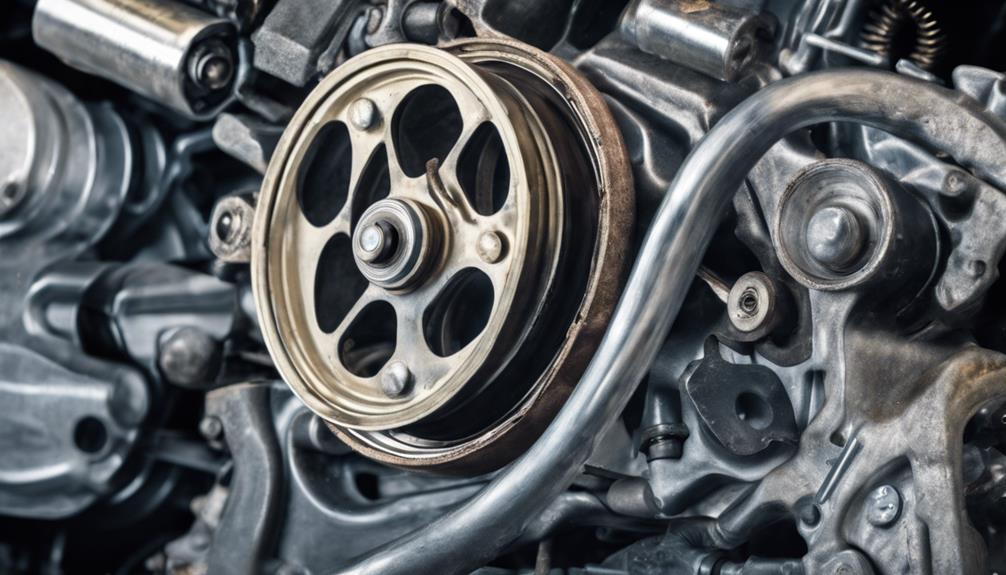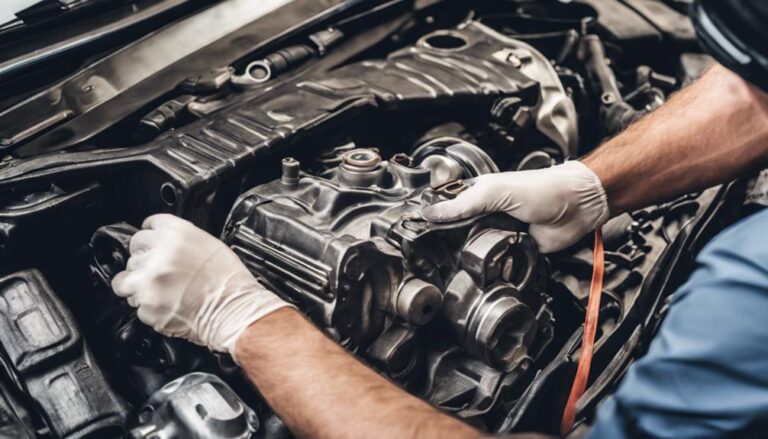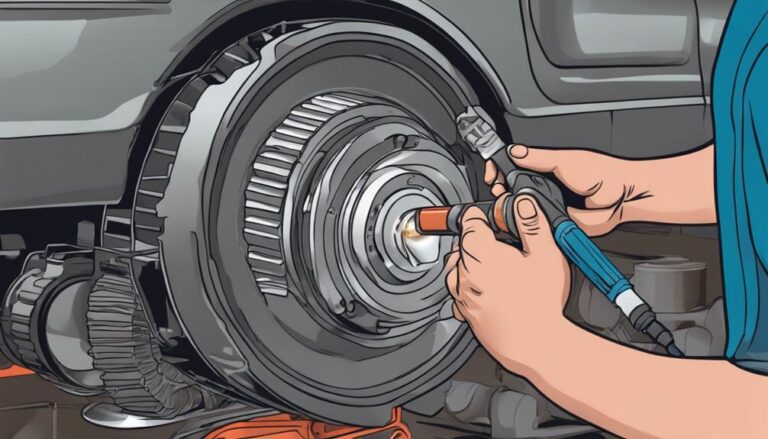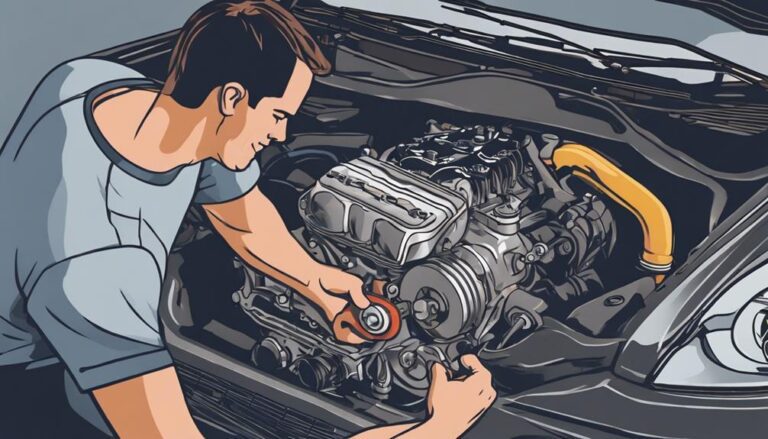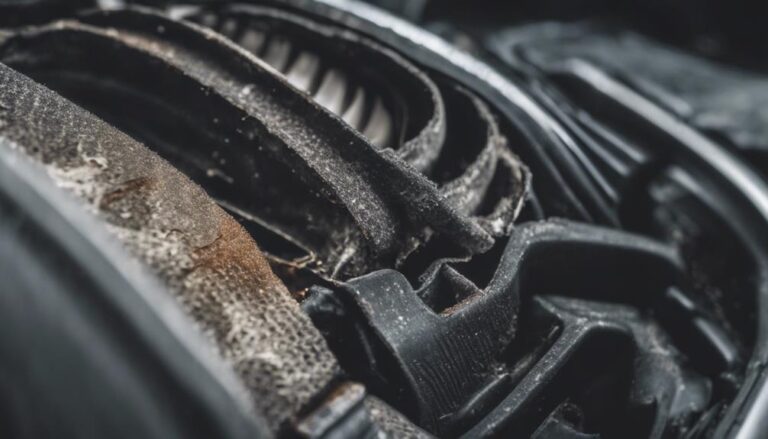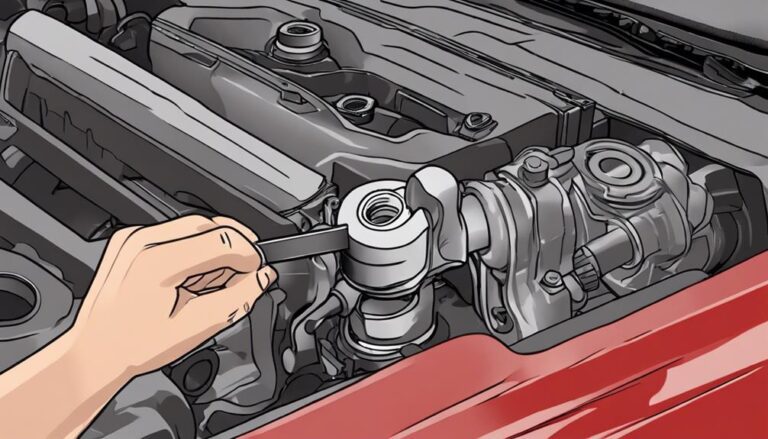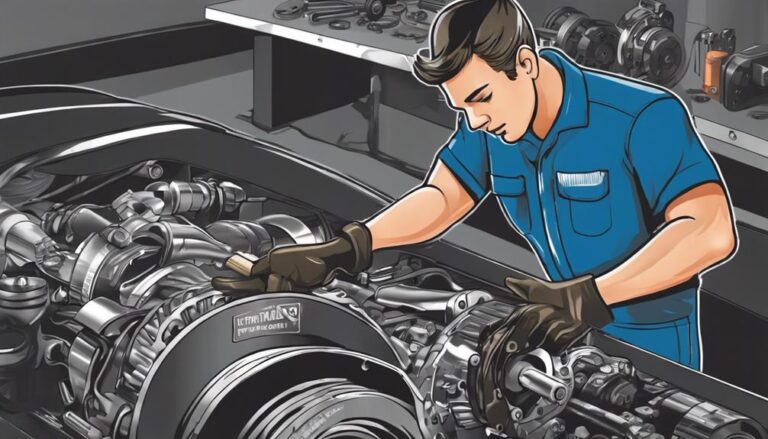What Causes Drive Belt Squealing Sound in Cars?
Ever wondered if the common belief that a drive belt squealing sound in your car is solely due to cold weather is accurate?
While temperature can indeed play a role in this issue, there are other factors at play that might surprise you.
Understanding the intricacies behind what causes your drive belt to squeal can help you avoid potential costly repairs down the line.
Stay tuned to uncover the full picture and learn how to address this common car nuisance effectively.
Key Takeaways
- Belt misalignment, tension, or wear are common causes of drive belt squealing.
- Signs of worn belts include cracks, fraying, and visible damage impacting engine performance.
- Proper tension and regular maintenance prevent squealing and inefficiencies in drive belts.
- Drive belt tensioners play a vital role in maintaining ideal tension for power transmission and engine system longevity.
Common Causes of Drive Belt Squealing
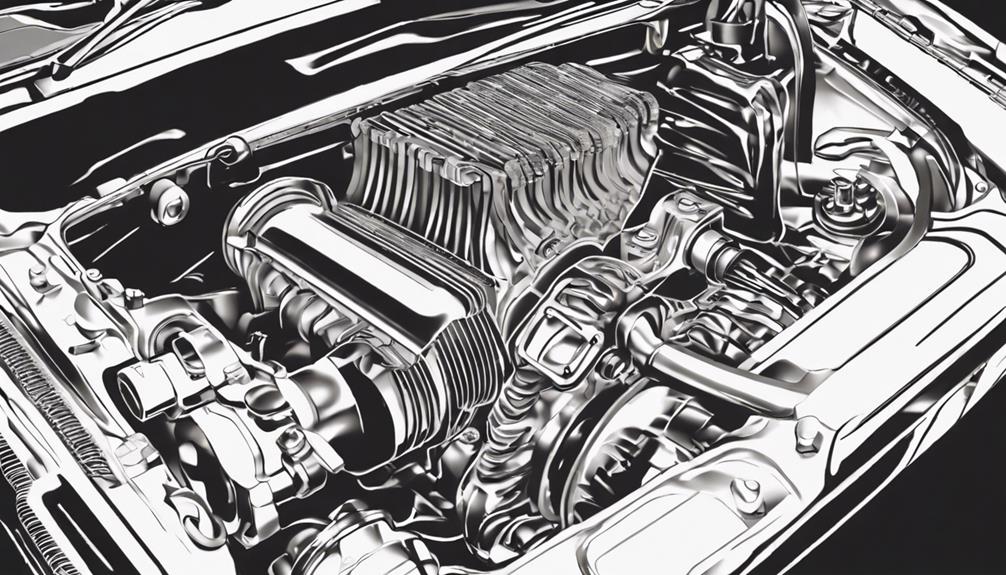
When drive belt squealing occurs in cars, it's typically caused by issues such as belt misalignment, tension, or wear. Important measures are essential to avoid such problems.
Regularly inspecting the drive belt for signs of wear, making sure proper tension, and aligning it correctly can help prevent squealing. Troubleshooting tips involve checking the alignment of the belt with the pulleys. Misalignment can lead to friction and cause the belt to squeal. Adjusting the tension by following the manufacturer's guidelines is also necessary.
Over time, drive belts can wear out due to constant use and exposure to heat. Replacing the belt before it reaches its breaking point can prevent squealing and ensure the smooth operation of your vehicle. By following these important measures and troubleshooting tips, you can address common causes of drive belt squealing and maintain the best performance of your car.
Signs of a Worn Drive Belt
To identify signs of a worn drive belt, closely inspect the belt for indicators such as cracks, fraying, or visible damage. Cracks on the belt surface are often a clear sign of wear and tear. These can lead to the belt losing its grip on the pulleys, affecting its efficiency. Additionally, fraying at the edges of the belt indicates that it's reaching the end of its lifespan and needs replacement. Visible damage, such as chunks missing from the belt or severe abrasions, can have a major impact on engine performance.
When a drive belt is worn, it can cause issues with engine performance. As the belt deteriorates, it may slip on the pulleys, leading to a decrease in power transmission efficiency. This can result in various problems like poor charging system operation, decreased air conditioning performance, or even engine overheating. Hence, timely belt replacement is important to maintain top engine performance and prevent costly repairs.
Importance of Drive Belt Maintenance
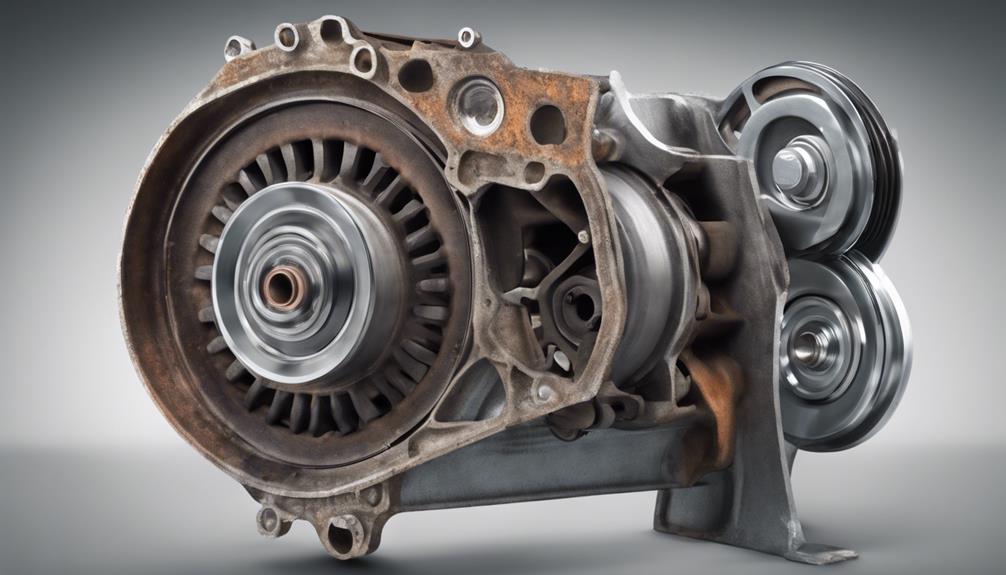
Have you ever wondered why maintaining your drive belt is important for your car's performance and longevity? Proper belt tensioning is vital to make sure that the drive belt functions effectively.
When the drive belt isn't adequately tensioned, it can slip, leading to decreased efficiency and potential squealing noises. Regular maintenance, including checking the belt tension and adjusting it when necessary, is essential in preventing such issues.
Preventative care is key to avoiding drive belt problems. By making sure that the belt is properly tensioned and free from wear and tear, you can prolong its lifespan and prevent costly repairs down the line.
Regular inspections and maintenance checks can help identify any issues early on, allowing you to address them before they escalate.
Understanding Drive Belt Tensioners
Understanding the function and importance of drive belt tensioners is essential for maintaining top performance in your vehicle. Drive belt tensioners play a critical role in ensuring the proper functioning and longevity of your car's engine system. Here are key points to ponder:
- Belt tension adjustment: Drive belt tensioners are responsible for maintaining the ideal tension in the belts that drive various engine components. Proper tension guarantees efficient power transmission and prevents slippage.
- Pulley alignment: Tensioner pulleys help in aligning the drive belts along the pulley system. Misalignment can lead to premature wear and tear on the belts and other engine components.
- Tensioner pulley function: The tensioner pulley works in conjunction with the tensioner arm to apply the right amount of tension to the belts. It's vital for the smooth operation of the engine accessories.
- Replacement: Over time, tensioners and pulleys may wear out. Regular inspection and timely replacement of these components can prevent drive belt issues and ensure the overall health of your vehicle.
How to Resolve Drive Belt Squeal
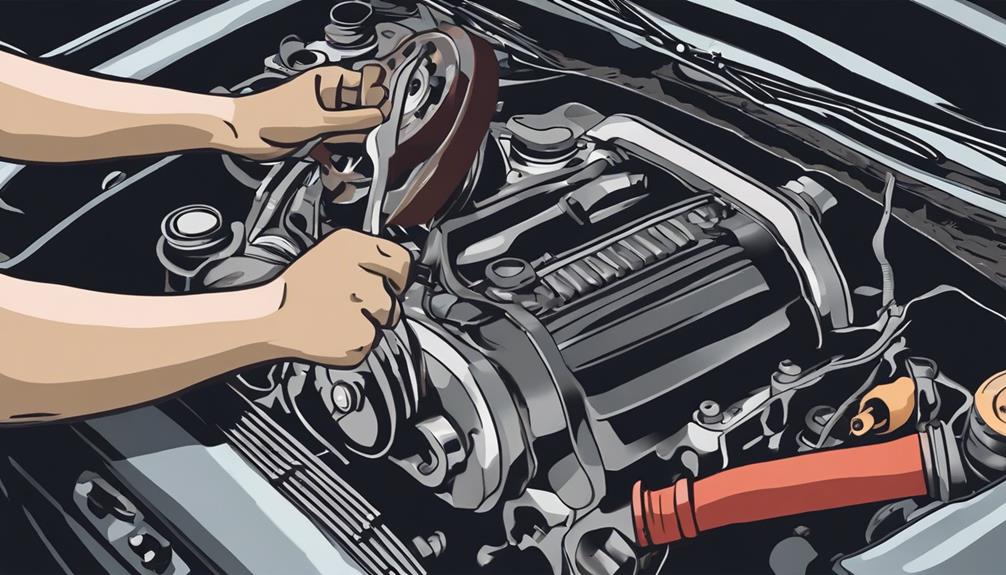
When troubleshooting a drive belt squeal in your car, start by checking for potential misalignment or wear in the drive belt tensioners and pulleys. If misalignment or wear is present, adjustments or replacements may be necessary to resolve the issue.
To address the squealing sound, consider applying belt lubrication techniques. Proper lubrication can help reduce friction and noise generated by the belt system. When applying lubricants, make sure they're compatible with the belt material to prevent damage.
If the squealing persists despite lubrication, it may be time to think about belt replacement procedures. Inspect the belt for signs of wear, such as cracks or fraying, and replace it if necessary. Proper installation of a new belt following manufacturer guidelines is important for best performance and to eliminate the squealing noise.
Frequently Asked Questions
Can Drive Belt Squealing Be a Sign of a More Serious Underlying Issue With the Car?
If you hear drive belt squealing, it could indicate a more severe problem. Engine damage may result from improper belt tension. It's important to address this promptly to prevent further issues and maintain your car's health.
Are There Any DIY Methods to Temporarily Silence a Squealing Drive Belt?
To temporarily silence a squealing drive belt, apply a quick fix like belt conditioner or soap. Regular maintenance, such as checking for belt wear and tension, can prevent squealing. Troubleshooting noises promptly can help avoid more serious issues.
How Often Should Drive Belts Be Checked and Replaced?
Regularly inspecting your drive belts is important. Maintenance intervals vary but typically every 60,000 miles. Check belt tension and look for wear indicators during visual inspections. Neglecting this could lead to costly repairs down the road.
Is It Possible for a Drive Belt to Squeal Even if It Appears to Be in Good Condition?
Sometimes, even if a drive belt looks fine, it can still squeal due to factors like improper tension or lack of lubrication. Weather conditions and belt age can also contribute to the sound. Regular checks are essential.
Are There Any Aftermarket Products or Treatments That Can Prevent Drive Belt Squealing?
To prevent drive belt squealing, some aftermarket solutions may offer effectiveness. Regular preventive maintenance for drive belts can also help. Consider trying products like belt dressings or tensioners, but always follow manufacturer recommendations for best results.
Conclusion
So, now you know what causes that annoying drive belt squealing sound in cars.
Did you know that according to a study by AAA, drive belt failures are one of the leading causes of breakdowns on the road?
It's important to regularly check and maintain your drive belt to prevent any issues and guarantee your vehicle runs smoothly.
Remember, a little maintenance goes a long way in keeping your car in top condition.

